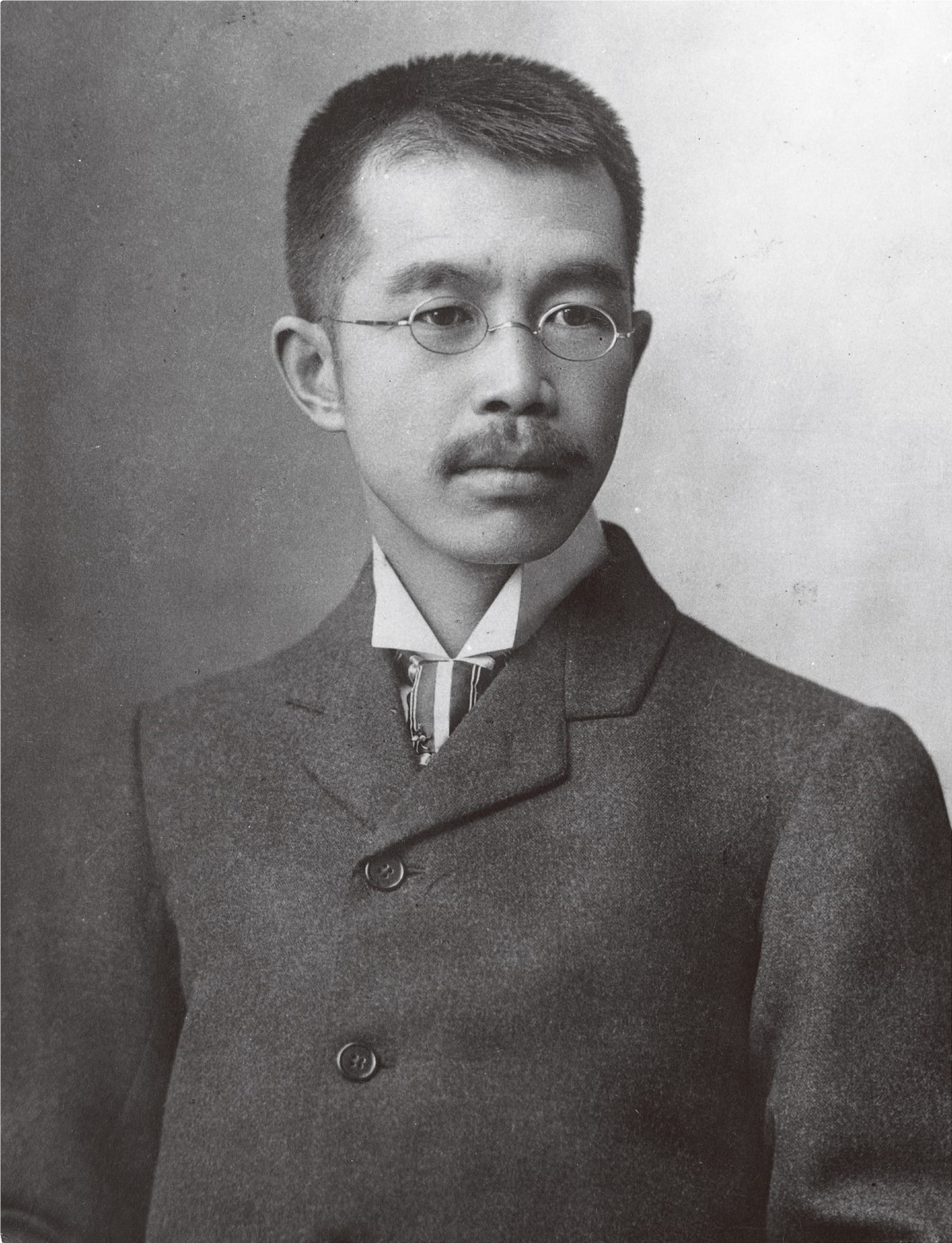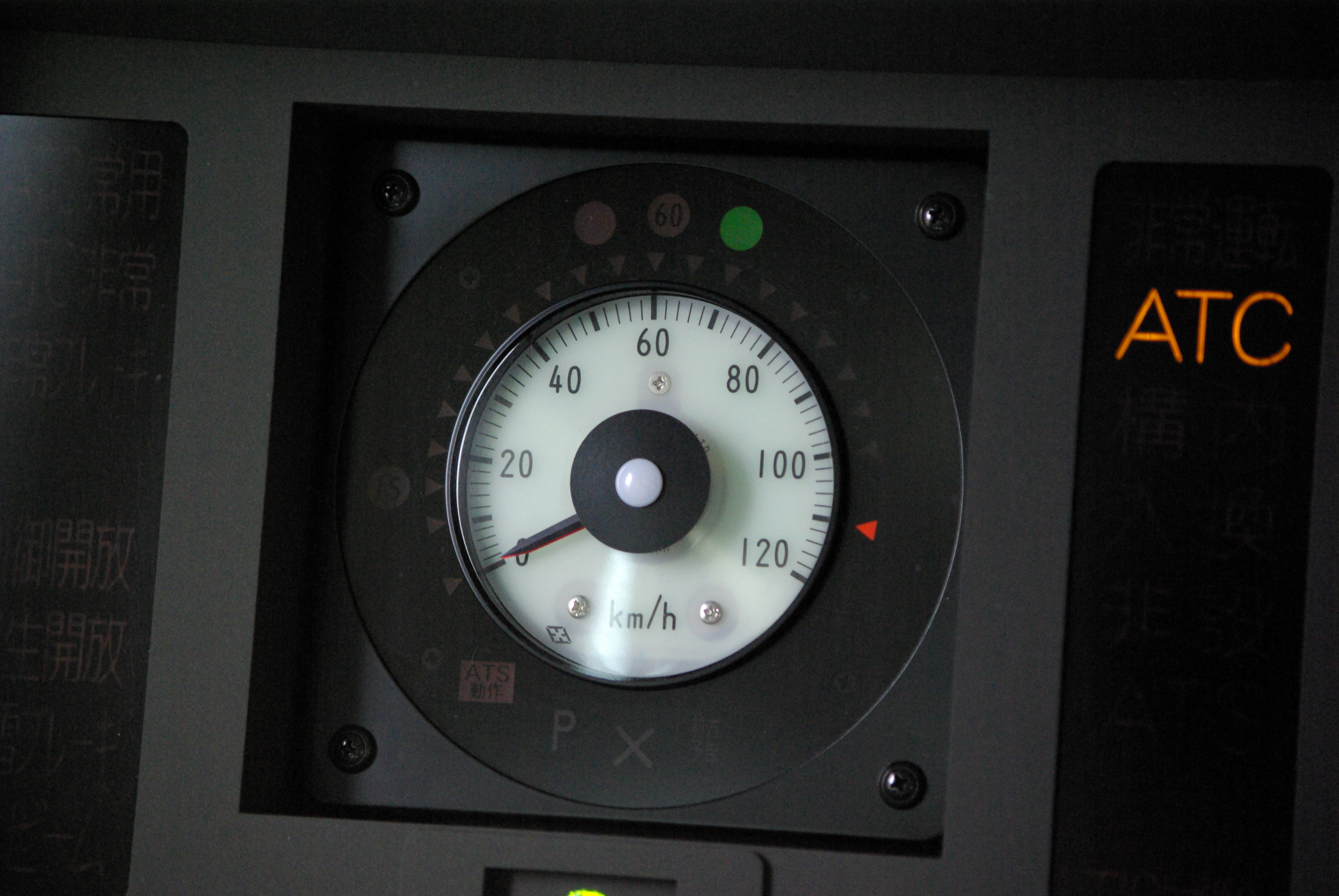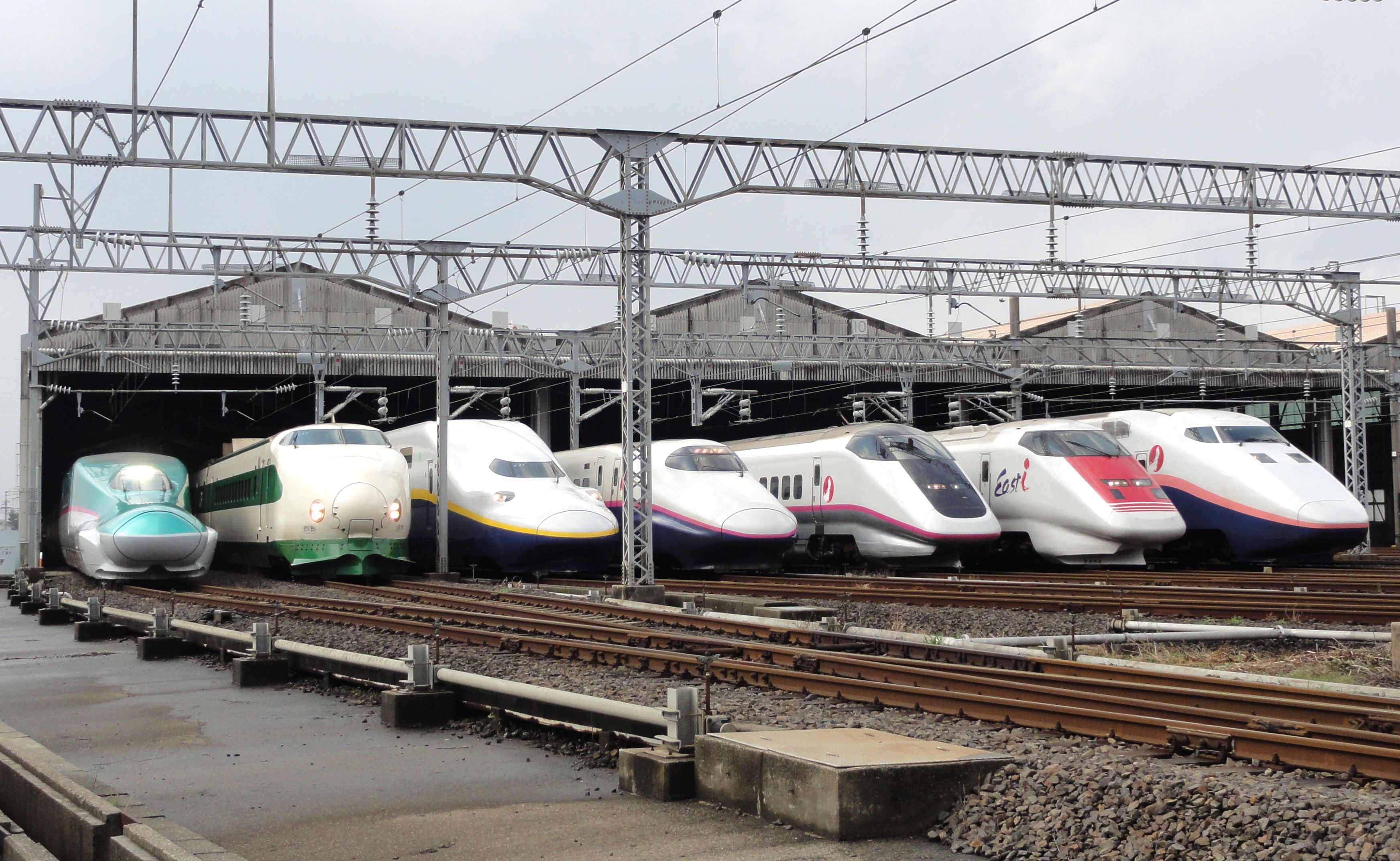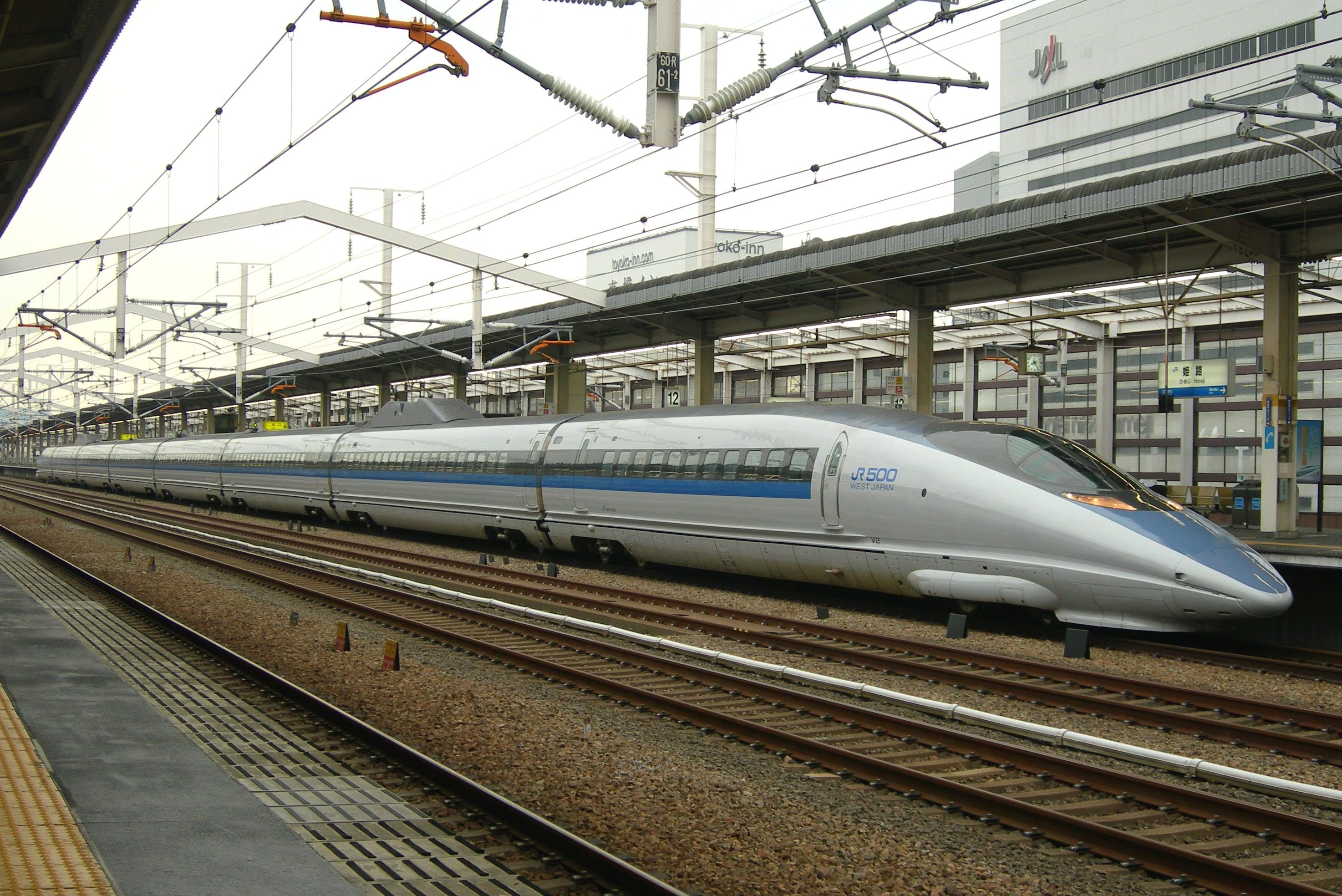|
700 Series Shinkansen
The is a Japanese Shinkansen high-speed train type built between 1997 and 2006, and entering service in 1999. Originally designated as "N300" during the development phase, they formed the next generation of Shinkansen vehicles jointly designed by JR Central and JR-West for use on the Tokaido Shinkansen, Hakata Minami Line and the San'yō Shinkansen. Though it has since been withdrawn from service on the Tokaido Shinkansen, it continues to operate on the San'yō Shinkansen and Hakata Minami Line. Design The 700 series is characterized by its flat 'duck-bill' nose designed to reduce the piston effect as the trains enter tunnels. 16-car units are painted white with blue stripes beneath the windows, and are used for '' Nozomi'', ''Hikari'', and '' Kodama'' services on the Tokaido and San'yō Shinkansen lines, while 8-car units used for the San'yō Shinkansen ''Hikari Rail Star'' services have a darker livery (grey with black window areas and a yellow stripe beneath the windows) w ... [...More Info...] [...Related Items...] OR: [Wikipedia] [Google] [Baidu] |
Hitachi
() is a Japanese Multinational corporation, multinational Conglomerate (company), conglomerate founded in 1910 and headquartered in Chiyoda, Tokyo. The company is active in various industries, including digital systems, power and renewable energy, railway systems, Health care, healthcare products, and Financial system, financial systems. The company was founded as an electrical machinery manufacturing subsidiary of the Kuhara Mining Plant in Hitachi, Ibaraki by engineer Namihei Odaira in 1910. It began operating as an independent company under its current name in 1920. Hitachi is listed on the Tokyo Stock Exchange and is a key component of the Nikkei 225 and TOPIX Core30 indices. As of June 2024, it has a market capitalisation of 16.9 trillion yen, making it the fourth largest Japanese company by market value. In terms of global recognition, Hitachi was ranked 38th in the 2012 Fortune Global 500 and 129th in the 2012 Forbes Global 2000. Hitachi is a highly globalised conglomerat ... [...More Info...] [...Related Items...] OR: [Wikipedia] [Google] [Baidu] |
ATC-NS
Automatic train control (ATC) is a general class of train protection systems for railways that involves a speed control mechanism in response to external inputs. For example, a system could effect an emergency brake application if the driver does not react to a signal at danger. ATC systems tend to integrate various cab signalling technologies and they use more granular deceleration patterns in lieu of the rigid stops encountered with the older automatic train stop (ATS) technology. ATC can also be used with automatic train operation (ATO) and is usually considered to be the safety-critical part of a railway system. There have been numerous different safety systems referred to as "automatic train control" over time. The first experimental apparatus was installed on the Henley branch line in January 1906 by the Great Western Railway, although it would now be referred to as an automatic warning system (AWS) because the driver retained full command of braking. The term is espec ... [...More Info...] [...Related Items...] OR: [Wikipedia] [Google] [Baidu] |
C46 Test Run Tokyo 20030202
{{Letter-NumberCombDisambig ...
C46 or C-46 may refer to: Vehicles * Boeing KC-46 Pegasus, an American military tanker aircraft * Curtiss C-46 Commando, an American transport aircraft * , a ''Fiji''-class light cruiser of the Royal Navy Other uses * An Act to amend the Criminal Code (offences relating to conveyances), Bill C-46 of the Parliament of Canada * C46 road (Namibia) * Caldwell 46, a variable nebula * Escadrille C46, a squadron of the French Air Service * Kaposi's sarcoma * Three Knights Game, a chess opening * C46, a 46 minute-long Compact Cassette The Compact Cassette, also commonly called a cassette tape, audio cassette, or simply tape or cassette, is an analog magnetic tape recording format for audio recording and playback. Invented by Lou Ottens and his team at the Dutch company ... [...More Info...] [...Related Items...] OR: [Wikipedia] [Google] [Baidu] |
Expo 2005
Expo 2005 was a world expo held for 185 days between Friday, March 25 and Sunday, September 25, 2005, in Aichi Prefecture, Japan, east of the city of Nagoya. Japan has also hosted Expo '70 Osaka (World Expo), Expo '75 Okinawa (Specialised Expo), Expo '85 Tsukuba (Specialised Expo), and Expo '90 Osaka (Horticultural Expo) and is currently hosting Expo 2025 Osaka (World Expo). The site of the expo would become the Expo 2005 Aichi Commemorative Park after it ended and is now the home of Ghibli Park. Theme The theme of the Expo was "Nature's Wisdom", with national and corporate pavilions expressing themes of ecological co-existence, renewable technology, and the wonders of nature. In Japanese, this is rendered as ''Ai-chikyūhaku'' (愛・地球博), which means (roughly) "Love the Earth Expo," as well as being a play on the name of the host prefecture, 愛知 ( Aichi). According to the official website: : ''We must come together and share our experience and wisdom, in order to ... [...More Info...] [...Related Items...] OR: [Wikipedia] [Google] [Baidu] |
Shinkansen Series 700 Symbol
The , colloquially known in English as the bullet train, is a network of high-speed railway lines in Japan. It was initially built to connect distant Japanese regions with Tokyo, the capital, to aid economic growth and development. Beyond long-distance travel, some sections around the largest metropolitan areas are used as a commuter rail network. It is owned by the Japan Railway Construction, Transport and Technology Agency and operated by five Japan Railways Group companies. Starting with the Tokaido Shinkansen () in 1964, the network has expanded to consist of of lines with maximum speeds of , of Mini-shinkansen lines with a maximum speed of , and of spur lines with Shinkansen services. The network links most major cities on the islands of Honshu and Kyushu, and connects to Hakodate on the northern island of Hokkaido. An extension to Sapporo is under construction and was initially scheduled to open by fiscal year 2030, but in December 2024, it was delayed until the end ... [...More Info...] [...Related Items...] OR: [Wikipedia] [Google] [Baidu] |
JR Central 700 051
JR, J. R. or Jr. may refer to: Arts and entertainment * ''J R'', a 1975 novel by William Gaddis * J. R. Ewing, a ''Dallas'' television character * JR Chandler, an ''All My Children'' television character * ''Jornal da Record'', a Brazilian news program * ''JR'', a 2001 punk album by Jim Bob * "Jr.", a 1992 song by Codeine on the album ''Barely Real'' People In arts and entertainment * JR (artist) (born 1983), French photographer and street artist * J.R. (musician) (born 1979), American Christian singer and producer * JR (rapper) (born 1987), South African rapper and entrepreneur * Jayam Ravi (born 1980), Indian actor * Jinyoung (entertainer, born 1994) (formerly ''Jr.''), South Korean singer of Got7 and JJ Project * Kim Jong-hyeon (born 1995; stage name: ''JR''), South Korean singer of NU'EST * J. R. Martinez (born 1983), American actor and soldier * Jim Ross (born 1952), American wrestling commentator * John Ruskin (1819–1900), English writer and art critic In sport * J. R. ... [...More Info...] [...Related Items...] OR: [Wikipedia] [Google] [Baidu] |
JR Central Shinkansen 700
JR, J. R. or Jr. may refer to: Arts and entertainment * '' J R'', a 1975 novel by William Gaddis * J. R. Ewing, a ''Dallas'' television character * JR Chandler, an ''All My Children'' television character * ''Jornal da Record'', a Brazilian news program * ''JR'', a 2001 punk album by Jim Bob * "Jr.", a 1992 song by Codeine on the album ''Barely Real'' People In arts and entertainment * JR (artist) (born 1983), French photographer and street artist * J.R. (musician) (born 1979), American Christian singer and producer * JR (rapper) (born 1987), South African rapper and entrepreneur * Jayam Ravi (born 1980), Indian actor * Jinyoung (entertainer, born 1994) (formerly ''Jr.''), South Korean singer of Got7 and JJ Project * Kim Jong-hyeon (born 1995; stage name: ''JR''), South Korean singer of NU'EST * J. R. Martinez (born 1983), American actor and soldier * Jim Ross (born 1952), American wrestling commentator * John Ruskin (1819–1900), English writer and art critic In sport * J. R ... [...More Info...] [...Related Items...] OR: [Wikipedia] [Google] [Baidu] |
Yaw Damper (railroad)
A yaw damper is a transverse mounted shock absorber used to prevent railcars and locomotives A locomotive is a rail vehicle that provides the motive power for a train. Traditionally, locomotives pulled trains from the front. However, push–pull operation has become common, and in the pursuit for longer and heavier freight train ... from swaying excessively from side to side. Yaw dampers prevent locomotives and passenger railcars from striking station platforms as they roll past them and reduce the gap that must be left between the railroad vehicle and the platform, improving safety. References External linksRailroad Yaw Damper Field Manual (archived) Rail technologies {{Rail-transport-stub ... [...More Info...] [...Related Items...] OR: [Wikipedia] [Google] [Baidu] |
500 Series Shinkansen
The is a Shinkansen High-speed rail, high-speed train type operated by West Japan Railway Company (JR-West) in Japan on the Tōkaidō Shinkansen line from 1997 until 2010, and the San'yō Shinkansen line since 1997. They were designed to be capable of but operated at , until they were retired from the primary ''Nozomi (train), Nozomi'' service in 2010. The trainsets were then refurbished and downgraded to the all-stations ''Kodama (train), Kodama'' service between and . Overview The general design concept was overseen by German industrial designer Alexander Neumeister. The running gear utilizes computer-controlled active suspension for a smoother, safer ride, and Yaw damper (railroad), yaw dampers are fitted between cars for improved stability. All sixteen cars in each original trainset were powered, giving a maximum of . Each train cost an estimated 5 billion yen, and only nine were built. It used biomimicry to reduce energy consumption by 15%, increase speeds by 10% and redu ... [...More Info...] [...Related Items...] OR: [Wikipedia] [Google] [Baidu] |
Kodama (train)
is one of the three train services running on the Tōkaidō and San'yō Shinkansen lines. Stopping at every station, the ''Kodama'' is the slowest Shinkansen service for trips between major cities such as Tokyo and Osaka. The Kodama trains are used primarily for travel to and from smaller cities such as Atami. Travelers between major cities generally take the '' Nozomi'' or '' Hikari'' services, which make fewer stops, although the ''Nozomi'' requires paying a supplement under the Japan Rail Pass while the ''Kodama'' does not, making these services an affordable alternative. Services ''Kodama'' trains generally run over shorter distances than ''Nozomi'' and ''Hikari'' trains. Typical ''Kodama'' runs include Tokyo - Nagoya / Shin-Osaka, Tokyo - Mishima / Shizuoka / Hamamatsu, Mishima / Shizuoka / Nagoya - Shin-Osaka, and Shin-Osaka / Okayama / Hiroshima - Hakata as well as some shorter late-night runs. The trainsets used for ''Kodama'' service are the same 700 series, and ... [...More Info...] [...Related Items...] OR: [Wikipedia] [Google] [Baidu] |
Hikari (train)
is the name of a high-speed train service running on the Tōkaidō Shinkansen, Tōkaidō and San'yō Shinkansen "bullet train" lines in Japan. Slower than the premier ''Nozomi (train), Nozomi'' but faster than the all-stations ''Kodama (train), Kodama'', the ''Hikari'' is the fastest train service on the Tōkaidō and San'yō Shinkansen that can be used with the Japan Rail Pass, which is not valid for travel on the ''Nozomi'' or ''Mizuho (train), Mizuho'' trains except through a special supplementary ticket. Service variations ''West Hikari'' These West Japan Railway Company, JR West services first appeared in 1988 on the San'yō Shinkansen between Shin-Ōsaka and Hakata using 6-car 0 Series Shinkansen, 0 series trains. 0 series 12-car SK units were employed on these services from 1989. From 11 March 2000, they were mostly replaced by the new 700 series ''Hikari Rail Star'' services, and were finally withdrawn on 21 April 2000. The ''West Hikari'' livery had a similar colour ... [...More Info...] [...Related Items...] OR: [Wikipedia] [Google] [Baidu] |
Nozomi (train)
is the fastest train service running on the Tokaido and San'yō Shinkansen lines in Japan. The service stops at only the largest stations, and services using N700 series equipment reach speeds of along the stretch between and . The trip between Tokyo and Osaka, a distance of , takes 2 hours 21 minutes on the fastest ''Nozomi'' service, with the fastest service between Tokyo Station and Hakata taking 4 hours 45 minutes. The trains stop at fewer stations than the '' Hikari'' and '' Kodama'' trains. On the Tōkaidō Shinkansen between Tokyo and Shin-Ōsaka, ''Nozomi'' trains stop only at , , and . On the Sanyō Shinkansen between Shin-Ōsaka and Hakata, all ''Nozomi'' trains stop at , , and , with certain trains also stopping at additional stations. Foreigners traveling with a Japan Rail Pass are required to purchase a special ticket to use the ''Nozomi'' service. History Wartime steam services The ''Nozomi'' name was first used for long-distance express services operat ... [...More Info...] [...Related Items...] OR: [Wikipedia] [Google] [Baidu] |







